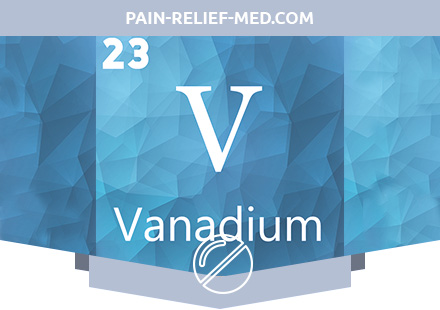What is Vanadium Deficiency (Insufficiency)?
Vanadium is a trace element, important for the functioning of the cardiovascular nervous and muscle systems, is involved in the formation of bone tissue and the regulation of carbohydrate metabolism
Pathogenesis during Vanadium Deficiency (Insufficiency)
Vanadium is found everywhere in the body, most of it is found in bone tissue, is also present in the heart muscle, muscle tissue, spleen, thyroid gland, lungs and kidneys. Excreted in the urine.
Reduce the effects of vanadium chromium and some proteins.
Despite the fact that the average person’s body contains only 0.10 mg of vanadium, it is nevertheless very important for the passage of many processes in the body, performs a number of functions:
- regulates the work of the cardiovascular system (reduces the risks of cardiovascular disease and hypertension)
- prevents the development of atherosclerosis (reduces the production of cholesterol in the liver cells)
- participates in the formation of bone tissue (contributes to the accumulation of calcium salts in bones, participates in the formation of teeth and increases their resistance to caries)
- participates in the regulation of carbohydrate metabolism (vanadium imitates many effects of insulin)
- participates in the cellular mechanism of regulation of the “sodium pump” (reduces swelling and removes tumors)
- regulates muscle and nerve tissue
- is a catalyst for many redox processes
- has an effect on some functions of the eyes, liver, kidneys
- regulates blood glucose and hemoglobin levels
- reduces the level of coenzymes A and Q
Daily Vanadium Need
The daily requirement for a healthy adult in vanadium is about 10-25 mcg.
Symptoms of Vanadium Deficiency (Insufficiency)
Vanadium deficiency may be accompanied by the following symptoms:
- lower cholesterol
- increased triglycerides
- increased phospholipids
Which leads to an increased risk of developing diseases such as atherosclerosis and diabetes.
In large quantities, vanadium exhibits toxic properties in the body, a dose of 2-4 mg is considered lethal. It is also proven that prolonged regular use of more than 10 mg of vanadium daily can lead to toxicological consequences. The main symptoms of an overdose include:
- allergy
- leukopenia
- anemia
- inflammatory reactions of the skin and mucous membranes
- decrease in vitamin C in the body
- increased risk of respiratory system diseases
- increased risk of developing tumors
It should be borne in mind that some substances enhance the toxic effect of vanadium, they include: ascorbic acid, chromium, ferrous iron, chloride and aluminum hydroxide.
Diagnosis of Vanadium Deficiency (Insufficiency)
Assessment of vanadium in the body is carried out according to the results of blood and urine tests. The concentration of vanadium in the blood plasma is 0.015-1.0 μg / L, urine – 0.2-1.0 μg / L. As an indicator of intoxication of the body with vanadium, the results of the determination of cystine in the blood and urine are used.
Treatment of Vanadium Deficiency (Insufficiency)
Sources of Vanadium
Vegetable
Cereals, soy, vegetable oil, legumes, rice, radish, potatoes, dill, parsley, black pepper, mushrooms, olives.
Animals
Sea fish and shellfish, fatty meat, liver.
A certain amount of vanadium is ingested with drinking water.

